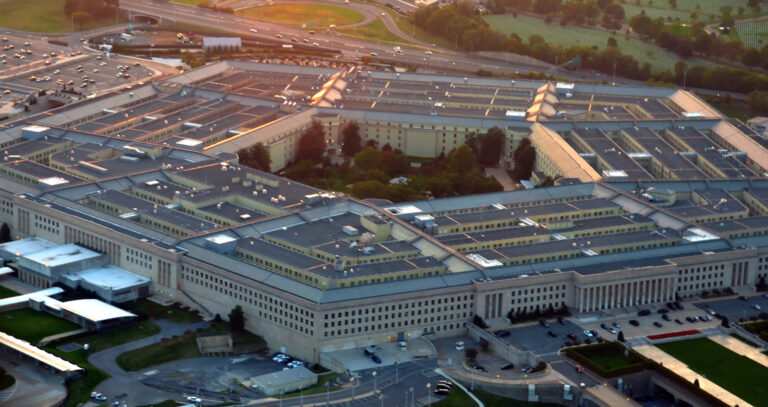
The Pentagon is requesting additional weapons in response to the transformation of traditional battlefields due to the increasing usage of inexpensive unmanned systems employing AI and autonomy across the world.
As the threat level of artificial intelligence and autonomous weapons systems amplifies, the U.S. undersecretary of defense for research and engineering issued a dire warning in a need statement released in May.
“Multi- and cross-domain Uncrewed Systems (UxS) continue to be a threat to U.S. forces around the world. This threat is expanding in all domestic and international regions,” the need statement detailed, referencing the 2022 National Defense Strategy.
The statement explained, “This threat is no longer just in the aerial domain, but also from ground, subterranean, sea, and undersea domains. Near-peer adversary nations are rapidly incorporating robust UxS capabilities into their military formations, and non-state actors are using UxS to increase their asymmetric advantage.”
The escalating conflict in Ukraine starkly illustrates the challenges conventional warfare tools face against these smart tech adversaries. An example of the importance and capability of unmanned weapons was seen recently when Ukraine reportedly utilized a $2,000 Chinese-made DJI drone to obliterate a Russian T-90 tank, a military asset valued at millions of dollars.
According to Marine Times, while aerial drones have left a significant impact in the Ukrainian conflict and the 2020 Nagorno-Karabakh conflict in South Caucasus, undersea systems are not far behind. For example, Ukrainian unmanned underwater vessels like the Toloka TLK-150 are believed to have restrained Russian aggression at sea.
Meanwhile, the Defense Advanced Research Projects Agency is developing unmanned systems that can traverse challenging environments in subterranean domains.
READ MORE: US military giving artificial intelligence classified operation info
The Pentagon’s need statement outlines the urgent necessity for countermeasures that can impair drone swarms’ detecting abilities, create navigational obstacles, employ kinetic and directed-energy defenses, and quantify the effectiveness of these defensive strategies.
Gregory Allen, Director of the Wadhwani Center for AI and Advanced Technologies at the Center for Strategic and International Studies, stressed that these cheap, smart drones are likely to be a recurring component of future battlefields.
He pointed out that despite several experiments with counter-drone swarm weapons, substantial procurement reflecting enduring place in the military arsenal is lacking.
In May, Allen published a paper highlighting the slow progress in developing AI and autonomy capabilities within the Defense Department, urging the need for clear and attainable objectives.
Additionally, the Pentagon is interested in novel sensors, autonomous defensive technologies, and passive defeat capabilities that could exploit AI vulnerabilities in unmanned systems.
This news article was partially created with the assistance of artificial intelligence and edited and fact-checked by a human editor.
0 comments :
Post a Comment